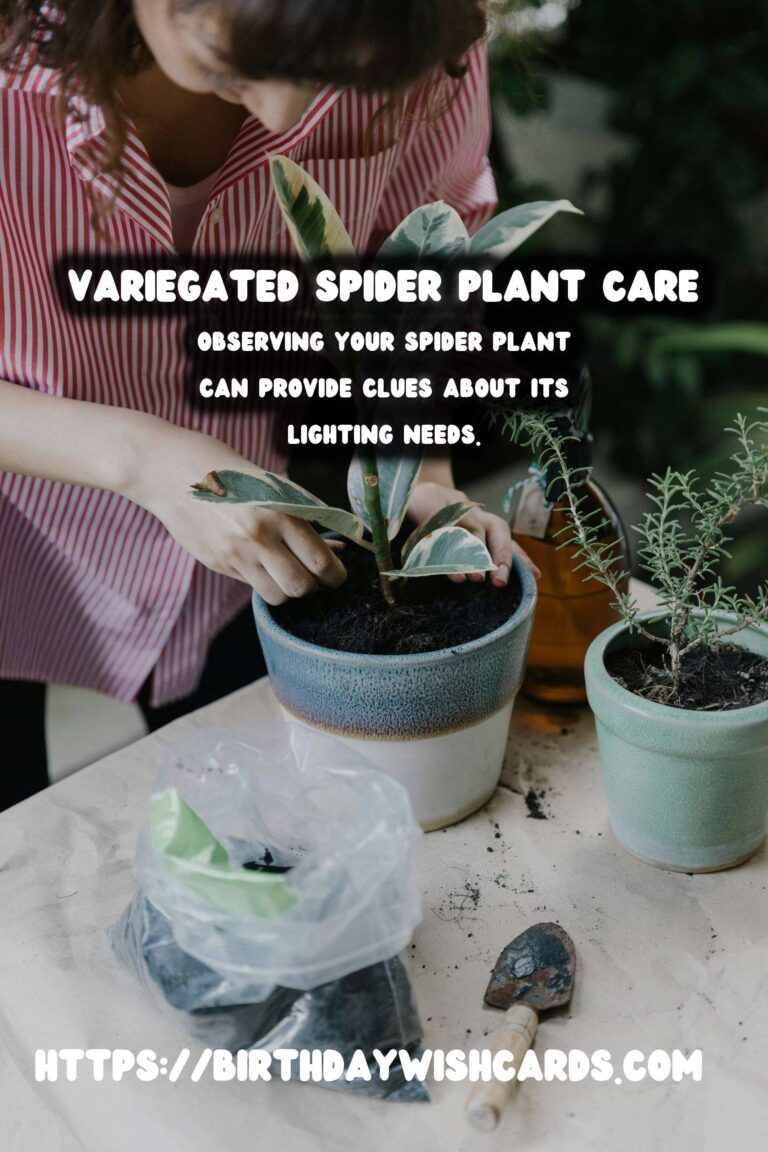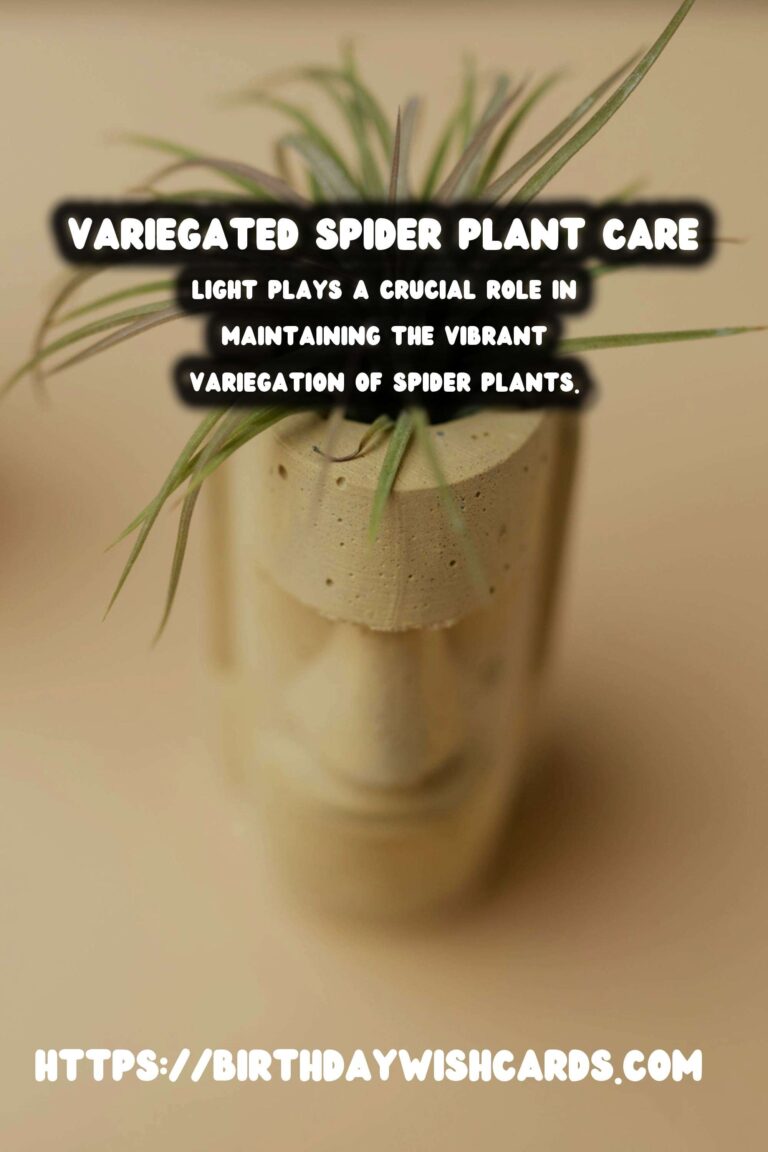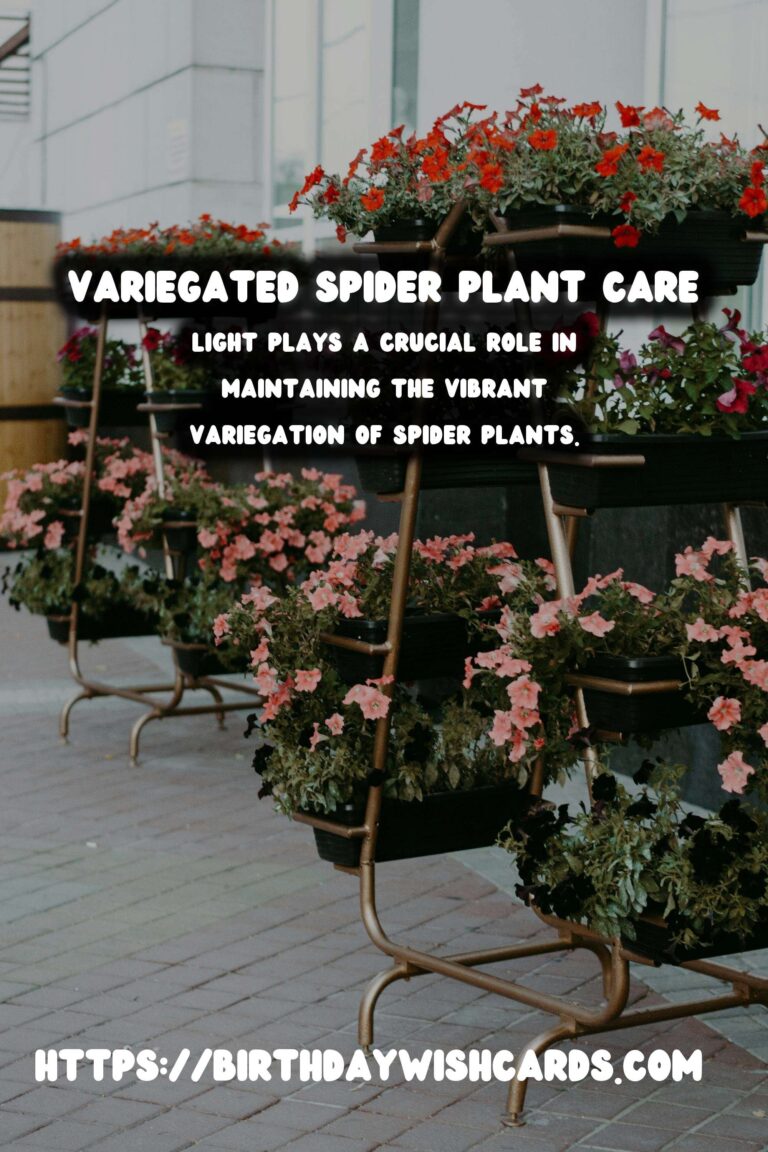
Spider plants, known for their arching leaves and vibrant green and white variegation, are a popular choice for both novice and experienced plant enthusiasts. Proper care and attention to variegation and light can ensure your spider plant thrives in any environment.
Understanding Spider Plant Variegation
Spider plant variegation refers to the pattern of colors seen on the leaves. Most commonly, spider plants have green leaves with white stripes along the edges or center, but other varieties can exhibit different patterns. Variegation can be influenced by several factors, including light exposure, genetic makeup, and overall plant health.
Maintaining the variegation of spider plants is essential to keep them looking their best. Variegated leaves not only add aesthetic appeal but also indicate a healthy plant. Any deviation in the pattern, such as fading or uniform green leaves, may suggest an issue with the plant’s environment or care routine.
The Role of Light in Spider Plant Health
Light plays a crucial role in maintaining the vibrant variegation of spider plants. These plants thrive in bright, indirect light, which helps them retain their striking color patterns. Direct sunlight, on the other hand, can scorch the leaves and lead to discoloration.
To optimize light conditions, place your spider plant near a window that receives plenty of indirect sunlight. If natural light is limited, consider using grow lights to supplement the plant’s needs. Adjust the distance from the light source to prevent any potential leaf burn.
Signs of Improper Lighting
Observing your spider plant can provide clues about its lighting needs. If the leaves appear pale or the variegation fades, it could indicate insufficient light. Conversely, brown tips or scorched patches may suggest too much direct sunlight.
To address these issues, gradually adjust the plant’s position to find the right balance of light. Regularly rotating the plant can also ensure even light distribution and prevent uneven growth.
Additional Care Tips for Spider Plants
Beyond light, there are several other factors to consider for optimal spider plant care. Water the plant when the top inch of soil feels dry, and ensure proper drainage to prevent root rot. Spider plants also benefit from occasional misting to increase humidity levels, especially in drier environments.
Fertilize sparingly, using a balanced liquid fertilizer during the growing season. Over-fertilization can lead to salt buildup, which may harm the plant.
In summary, understanding the needs of your spider plant in terms of variegation and light can significantly impact its health and appearance. By providing the right conditions and care, you can enjoy a lush and vibrant spider plant that enhances your living space.
Spider plants are known for their arching leaves and vibrant green and white variegation. Variegation can be influenced by light exposure, genetic makeup, and overall plant health. Light plays a crucial role in maintaining the vibrant variegation of spider plants. Spider plants thrive in bright, indirect light. Observing your spider plant can provide clues about its lighting needs. 









#SpiderPlants #PlantCare #IndoorPlants #Variegation #LightRequirements




